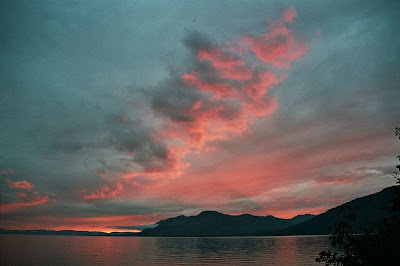 Hannah Hickey in the University of Washington News: Santa’s workshop at the North Pole is not under water, despite recent reports. A dramatic image captured by a University of Washington monitoring buoy reportedly shows a lake at the North Pole. But Santa doesn’t yet need to buy a snorkel.
Hannah Hickey in the University of Washington News: Santa’s workshop at the North Pole is not under water, despite recent reports. A dramatic image captured by a University of Washington monitoring buoy reportedly shows a lake at the North Pole. But Santa doesn’t yet need to buy a snorkel.“Every summer when the sun melts the surface the water has to go someplace, so it accumulates in these ponds,” said Jamie Morison, a polar scientist at the UW Applied Physics Laboratory and principal investigator since 2000 of the North Pole Environmental Observatory. “This doesn’t look particularly extreme.”
After media coverage in CBS News, The Atlantic and the U.K.’s Daily Mail, Morison returned from overseas travel late last week to a pile of media inquiries. Over the weekend the team posted an explanatory page on the project website.
One of the issues in interpreting the image, researchers said, is that the camera uses a fisheye lens. “The picture is slightly distorted,” said Axel Schweiger, who heads the Applied Physics Laboratory’s Polar Science Center. “In the background you see what looks like mountains, and that’s where the scale problem comes in – those are actually ridges where the ice was pushed together.”
Researchers estimate the melt pond in the picture was just over 2 feet deep and a few hundred feet wide, which is not unusual to find on an Arctic ice floe in late July.
In the midst of all the concern, the pool drained late July 27. This is the normal cycle for a meltwater pond that forms from snow and ice — it eventually drains through cracks or holes in the ice it has pooled on....
The view from webcam 2 on July 26 shows open water on the ice.NSF North Pole Environmental Observatory
























.jpg)












